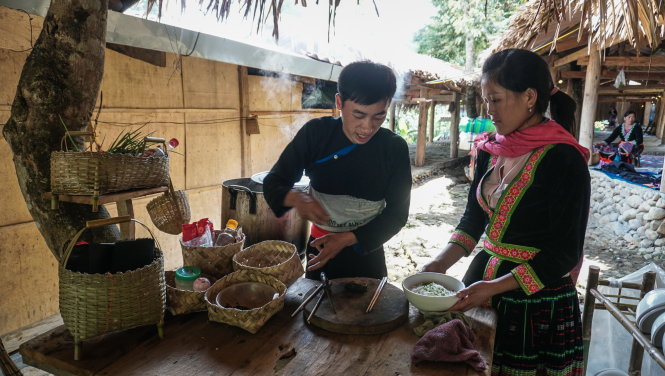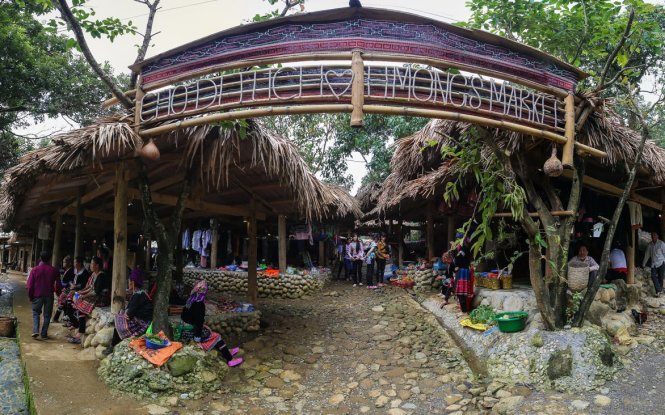An ethnic-minority village in mountainous northwestern Vietnam is now well known as a tourist magnet for its cleanliness after shedding a past that was plagued with social evils.
The road cutting through rolling hills leading to a tribe of the ethnic Hmong people in Lai Chau Province is usually flanked with flamboyantly yellow terrace rice fields and gold-hued cymbidiums.
Visitors to the Sin Suoi Ho tribal village, perched in a 1.4-kilometer mountain, can also drink in a heart-shaped waterfall, touch sailing clouds on the mountaintop and breathe brisk air.
Despite the scenic beauty, the village can hardly achieve its present tourist heyday but for a concerted communal effort that commenced multiple years ago.
The scenery serves as the backdrop for 123 families, many of which used to have adult members falling prey to drugs, drunkenness and smoking in days prior to 1995.
Theft and other social evils were rife in the upcountry place, and gloom and doom seemed to be hanging tenaciously over the village’s future.
“We thought that the entire tribe would be extinct, with no chance for rehabilitating drug addicts. The place would have no future,” recalled Hang A Xa, a villager.
Between 1995 and 2005, Hang A Xa and other people persuaded local addicts to give up drugs, a long-standing effort that culminated in the absence of such users in 2014.
The next issue to address was poverty as the residents here were farmers who knew no better ways to become wealthy.
Vang A Chinh, the then-village head, convinced all locals to revamp their houses, build public roads, and develop the homestay lodging model right at their homes if possible.
As part of this grass-roots sanitization initiative, the ingrained practice of keeping free-range pigs was deterred amid strong opposition from many villagers.
Some said participants in the plan had no rights to control the roaming of pigs because even the government was afraid of doing so.
Making concrete roads also faced a negative reaction, with many locals saying that they had already walked on dirt paths and needed no hard artificial materials to cover them.
Vang A Chinh and other pioneers in the makeover led an effort to boost community-based tourism on an ad hoc basis that they were uneducated and inexperienced in the activity.
Vang A Chinh set a role example in all the process in a tribal area where dwellers are malleable to behavior of their leader.
The Sin Suoi Ho village has been vastly tranformed as of 2015, with a promising influx of tourists and the resultant financial benefits.
 |
| A man and his wife prepare food at a market in the Sin Suoi Ho tribal village in Lai Chau Province, northwestern Vietnam. Photo: Tuoi Tre |
The place has no longer seen littering, wine and tobacco sales at markets and scenes with drunken men carousing or gambling at home gatherings.
The consumption of tobacco derived from Nicotiana rustica, a high nicotine concentration plant, is quite popular amongst ethnic minority communities across Vietnam.
Vang A Chinh said his village is trying to go further: free of plastic bags by utilizing bamboo containers as an alternative or buying food wrapped in banana leaves.
“I told the people here that too much use of plastic bags will destroy the envionrment and may cause cancer in the long run,” the leader said.
Like us on Facebook or follow us on Twitter to get the latest news about Vietnam!





















































